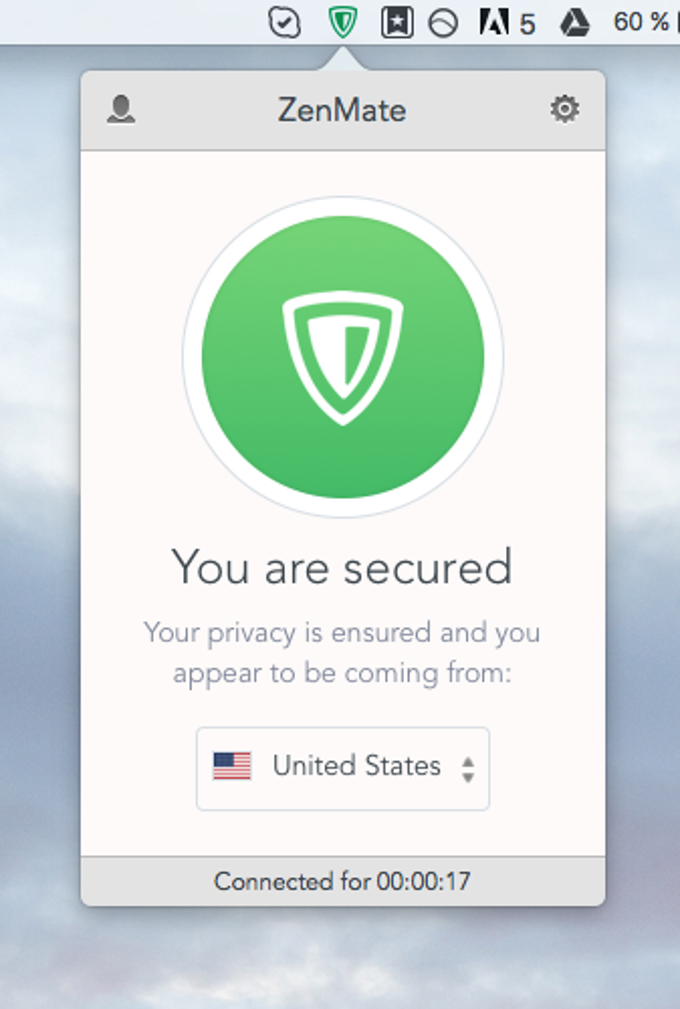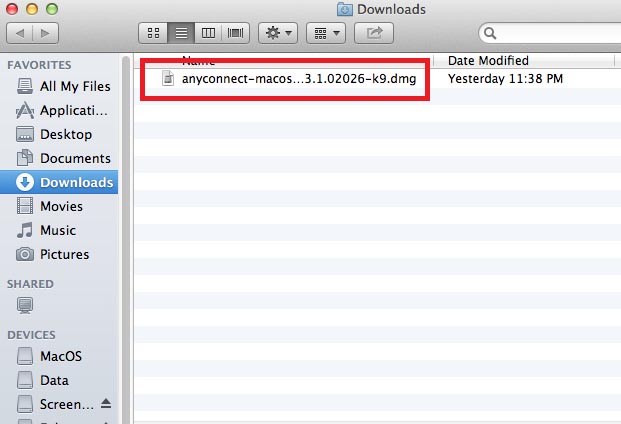- Cisco Anyconnect Vpn Client For Mac Os X Yosemite 10 10 5
- Cisco Anyconnect Vpn Client For Mac Os X Yosemite
- Cisco Anyconnect Vpn Client For Mac Os X Yosemite 10
Cisco, best-known for their Anyconnect, have put out the VPN Client as another solution for establishing a virtual private network. It is an excellent solution for remotely connecting to admin systems and office networks. This program is free and quite simple. Without having to install any additional software, OS X supports the VPN protocols L2TP (over IPSec), PPTP and Cisco IPSec. If you’re using PPTP or Cisco IPSec you should still be able to follow along without any problems, the steps are quite similar. Give your Service Name:, a name. Mac OS Mojave (10.14) is compatible with AnyConnect 4.9.05042 and below For more details about the supported operating systems (Windows, Linux, Mac) of the Cisco AnyConnect Secure Mobility Client, refer to the article on Cisco AnyConnect Secure Mobility Client Supported Operating Systems and Requirements.
Table of Contents
Some USC online-based services require access through on-campus USC Secure Wireless or a wired network connection. USC offers a Virtual Private Network (VPN) connection to provide secure remote access to these services when you are off-campus. When off-campus, you must use the Cisco AnyConnect VPN client to access internal USC systems handling confidential or sensitive data, such as Student Information System (SIS), and file servers for specific schools and departments. The Cisco AnyConnect Secure Mobility client is a web-based VPN client that does not require user configuration.
This webpage provides instructions on how to install and connect to Cisco AnyConnect Secure Mobility client for Macintosh OS 10.6 (Snow Leopard) and later.
Login and Download VPN Software
- Connect to your local network.
- Go to https://vpn.usc.edu/.
- On the login screen, enter your USC NetID and Password.
- Then click Login.
- After you have logged in, click AnyConnect on the left.
- In the middle of the screen, click Start AnyConnect.
- On the Download & Install screen, click Download for Mac OS.
Install AnyConnect VPN Client
- Search for the downloaded file on your computer and double-click it.
- An Install AnyConnect Secure Mobility Client pop-up window will open. Click Continue. This will initiate the installation.
- On the Software License Agreement screen, click Continue.
- On the pop-up window, click Agree.
- On the Standard Install on “Macintosh” screen, click Install.
- In the pop-up window, enter your computer’s administrator username and password. This should be the username and password you use to log into your computer.
- Then click Install Software.

- The installation will begin. When prompted, click Continue.
- When the installation is complete, you will see the message “The installation was successful. The software was installed.”
- Click Close.
Connect with AnyConnect VPN
- Search for the Cisco AnyConnect Secure Mobility Client app on your desktop (Type “Cisco AnyConnect” in your computer’s search bar).
- Open the application.
- In the AnyConnect pop-up window, enter: vpn.usc.edu
- Click Connect.
- On the login screen, enter your USC NetID and Password.
- Click Sign in.
- Click on Send Me a Push, Call Me or Enter a Passcode to complete the Duo Two-Factor Authentication (2FA).
- You are now connected to the USC network through the Cisco AnyConnect VPN client.
Getting Help
If you need help installing or connecting to your Cisco AnyConnect Secure Mobility client, contact the ITS Customer Support Center.
Cisco AnyConnect is the recommended VPN client for Mac. The built-in VPN client for Mac is another option but is more likely to suffer from disconnects.
Overview
Stanford's VPN allows you to connect to Stanford's network as if you were on campus, making access to restricted services possible. To connect to the VPN from your Mac you need to install the Cisco AnyConnect VPN client.

Two types of VPN are available:
- Default Stanford (split-tunnel). When using Stanford's VPN from home, we generally recommend using the Default Stanford split-tunnel VPN. This routes and encrypts all traffic going to Stanford sites and systems through the Stanford network as if you were on campus. All non-Stanford traffic proceeds to its destination directly.
- Full Traffic (non-split-tunnel). This encrypts all internet traffic from your computer but may inadvertently block you from using resources on your local network, such as a networked printer at home. If you are traveling or using wi-fi in an untrusted location like a coffee shop or hotel, you may wish to encrypt all of your internet traffic through the Full Traffic non-split-tunnel VPN to provide an additional layer of security.
You can select the type of VPN you want to use each time you connect.
Install the VPN client
- Download the Cisco AnyConnect installer for Mac.
- Double-click the InstallAnyConnect.pkg file to start the Cisco AnyConnect Installer wizard.
- When the Welcome window displays, click Continue.
- Select your hard drive as the destination where you want to install Cisco AnyConnect and then click Continue.
- Click Install to perform a standard installation of the software.
- At the prompt, enter your administrator account password for the Mac and click Install Software.
- When the software has finished installing, click Close.
Connect to the Stanford VPN
Cisco Anyconnect Vpn Client For Mac Os X Yosemite 10 10 5
- To launch the VPN client, open your Applications folder and navigate to Cisco > Cisco AnyConnect Secure Mobility Client.app.
- When prompted for a VPN, enter su-vpn.stanford.edu and then click Connect.
- Enter the following information and then click OK:
- Group: select Default Stanford split- tunnel (non-Stanford traffic flows normally on an unencrypted internet connection) or Full Traffic non-split-tunnel (all internet traffic flows through the VPN connection)
- Username: your SUNet ID
- Password: your SUNet ID password
- Next, the prompt for two-step authentication displays.
- Enter a passcode or enter the number that corresponds to another option(in this example, enter 1 to authenticate using Duo Push on an iPad). You may have to scroll down the list to see all of your options. Then click Continue.
- If your only registered authentication method is printed list, hardware token, or Google Authenticator, the menu does not display. Enter a passcode in the Answer field and click Continue.
- Click Accept to connect to the Stanford Public VPN service.
- Once the VPN connection is established, the Cisco AnyConnect icon with a small lock appears in the dock.
Cisco Anyconnect Vpn Client For Mac Os X Yosemite
Disconnect from the Stanford VPN
Cisco Anyconnect Vpn Client For Mac Os X Yosemite 10
- Click the Cisco AnyConnect icon with a small lock.
- At the prompt, click Disconnect.
